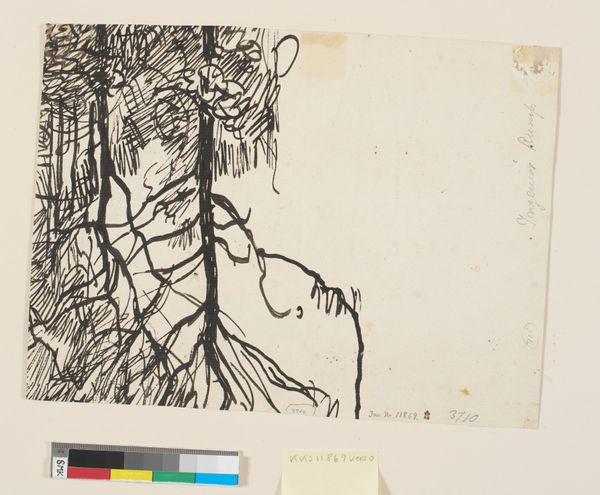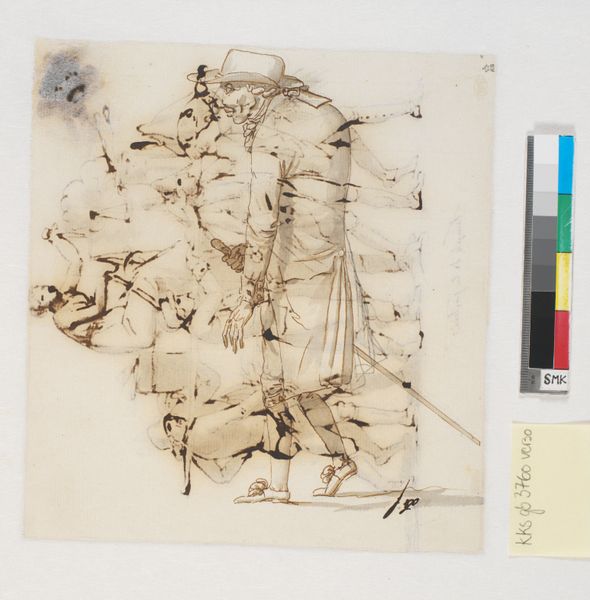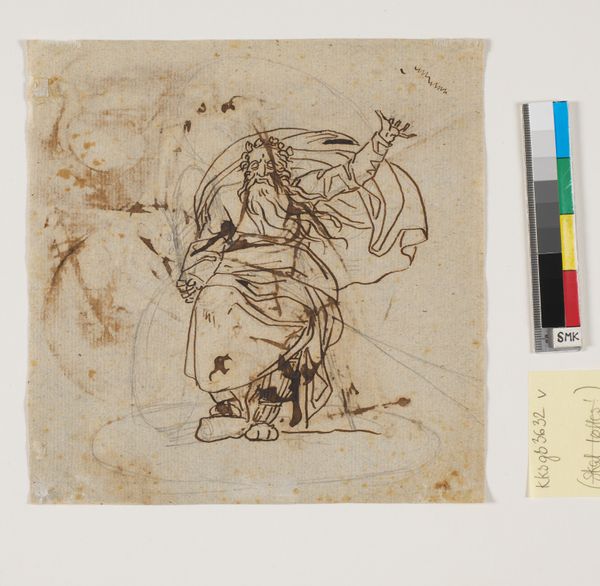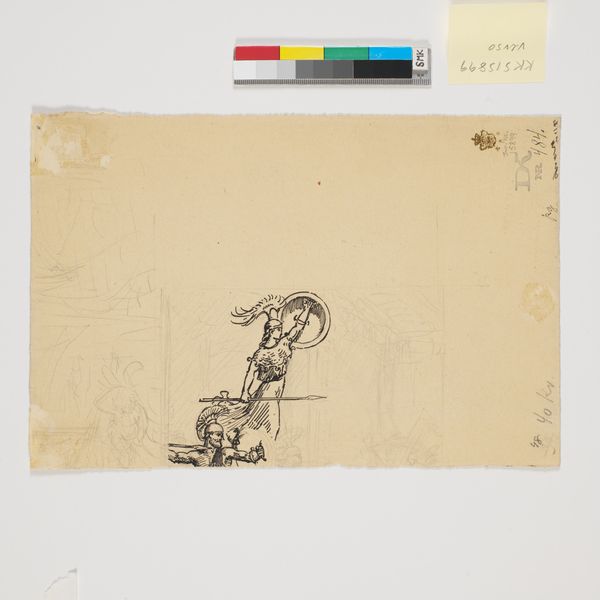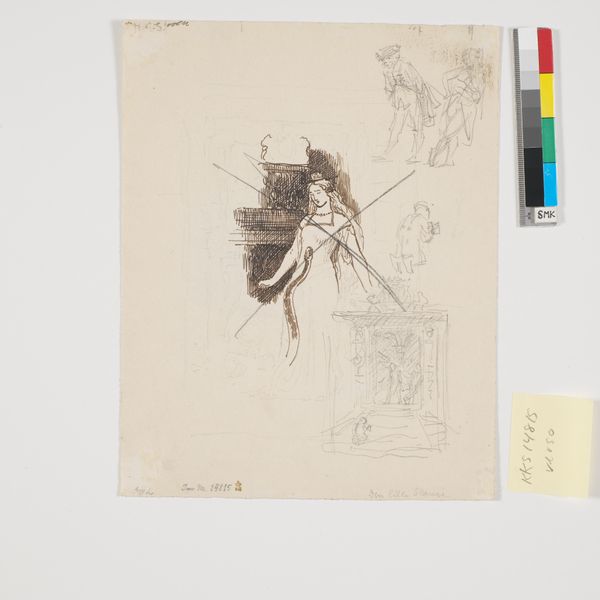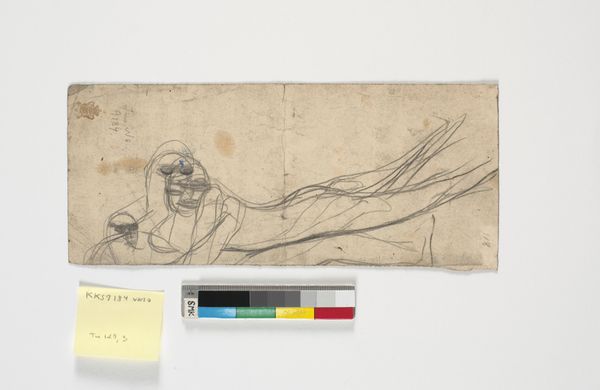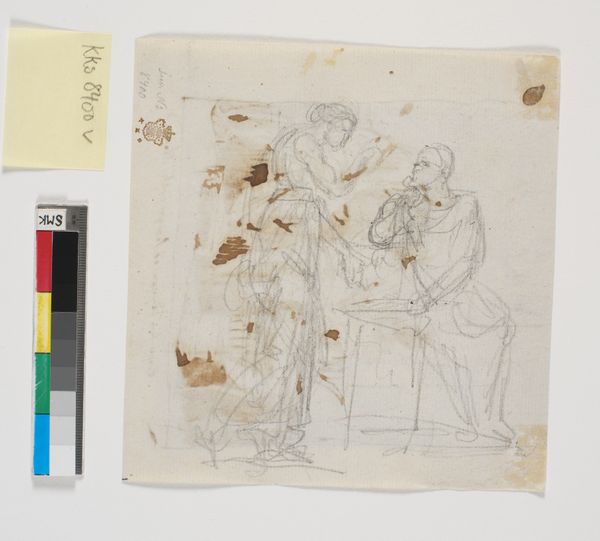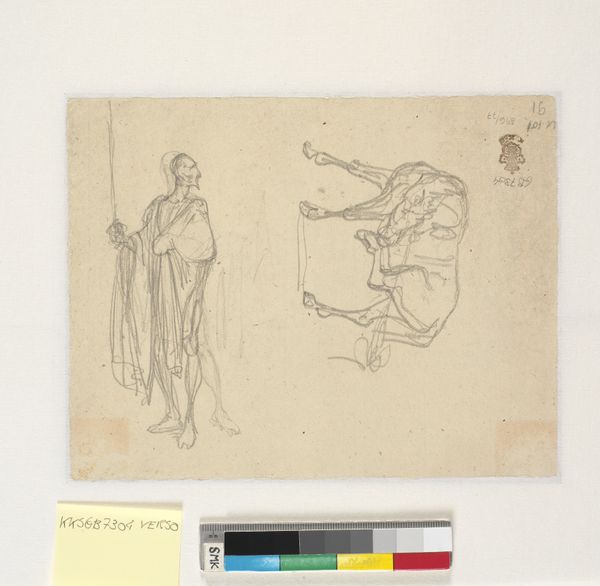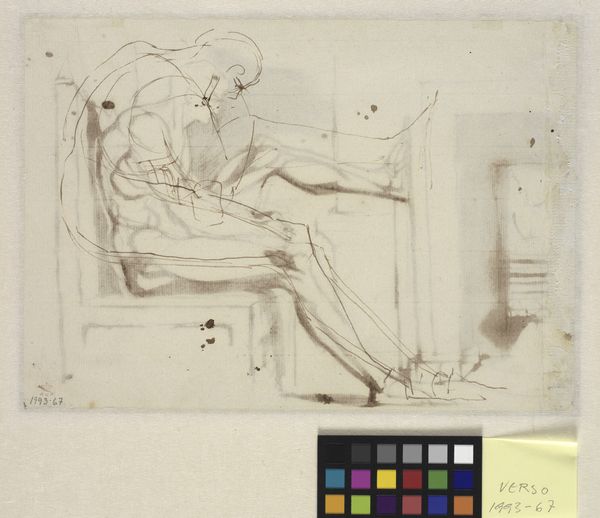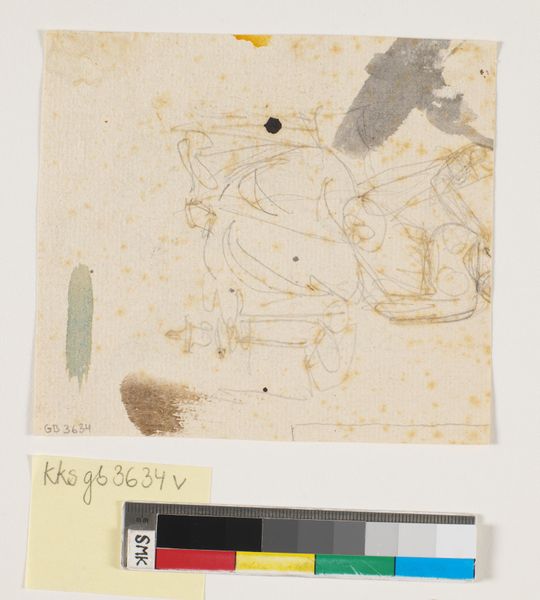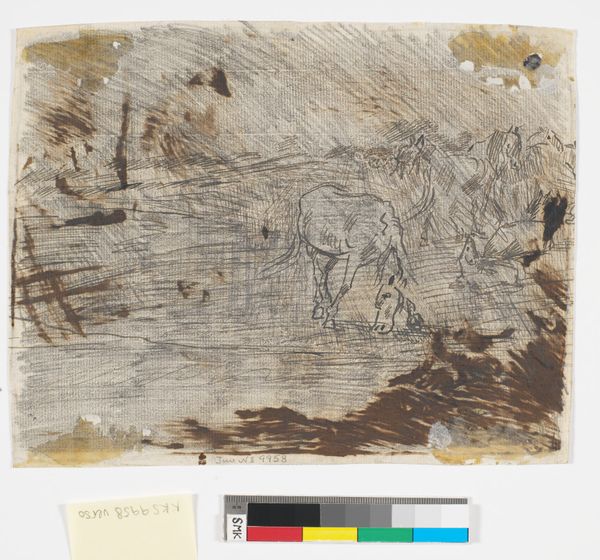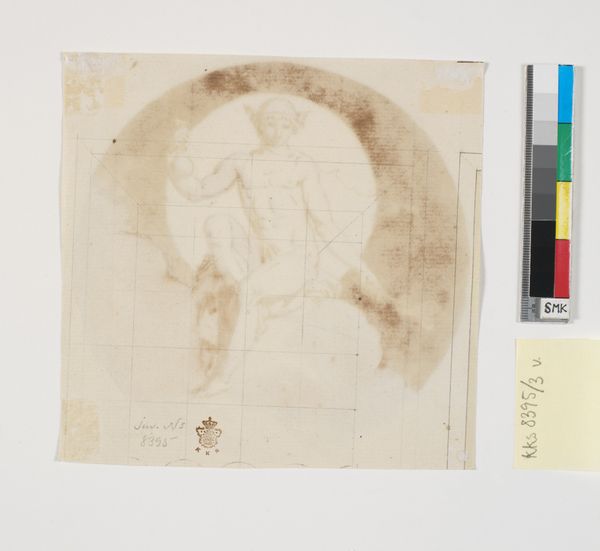
Dimensions: 109 mm (height) x 160 mm (width) (bladmaal)
Curator: I find Karl Isakson's "Landskab og figurrids," created between 1905 and 1908, particularly evocative. Its location within the SMK, the National Gallery of Denmark, speaks to its significance in Danish art history. Editor: My initial reaction is that it feels fragmented. The pencil work is loose, almost chaotic on the left side. Then there’s the stark figure on the right; they barely seem related at all. Curator: That fragmentation is quite telling. Consider the artistic climate of the time, just before World War I. There's a palpable sense of unease, of established orders breaking down. Isakson, through the act of juxtaposing landscape and figure, perhaps mirrored those societal shifts. The figure seems almost isolated within the composition, disconnected from the natural world. Editor: Yes, I see that now. Looking at the lines alone, there's a real contrast in technique. The landscape’s wild scribbles practically vibrate, while the figure is rendered with a simpler, more deliberate line. I almost feel like they're from different drawings entirely, mashed together. That sharp difference heightens the feeling of tension between them. Curator: Absolutely. And it's precisely this tension, this lack of resolution, that I believe makes it such a potent statement. Isakson was associated with the artistic circles in Denmark who questioned societal conventions and sought to reimagine representation. Editor: It definitely isn't your typical tranquil landscape with a figure peacefully integrated. It almost feels confrontational. Like a demand that we acknowledge the discomfort of dissonance, formally represented, in this case, by way of clashing representational languages, the almost savage quality of the lines against that clean outline, so different, is quite disturbing. Curator: Precisely. The historical value is, in its time it captured the social tension and upheaval, this isn't just a drawing of a landscape and a person; it's a visual manifestation of uncertainty and cultural transformation, reflective of the artistic sensibilities and social context in which it was created. Editor: And that discord resonates still, not only on the social context but even with the sharp differences in composition; that's how "Landskab og figurrids" captures a universal and still-enduring emotional experience, so immediate still in all it's unsettling, visual power.
Comments
No comments
Be the first to comment and join the conversation on the ultimate creative platform.
